chloroquine phosphate for fish
chloroquine phosphate for fish, beyond its human applications, has found a significant role in aquaculture and ornamental fishkeeping. It is considered one of the most effective treatments for a variety of parasitic infections that can affect fish. Fish parasites are a common issue for both marine and freshwater species, and if left untreated, they can devastate entire populations in aquariums or fish farms.
chloroquine phosphate fish
The most common parasites that affect fish are protozoans like Ichthyophthirius multifiliis(commonly referred to as ich), which causes small white spots on the fish’s body, and *Amyloodinium* (marine velvet), which causes a gold or rust-colored dusting on the fish’s skin. These parasites can rapidly spread in an aquarium, especially if new fish are introduced without proper quarantine procedures.chloroquine phosphate fish
Chloroquine phosphate has become a go-to treatment
for many fishkeepers because it is more gentle on fish compared to some traditional treatments, such as copper-based medications, which can be toxic to sensitive species.
How Chloroquine Phosphate Works in Fish
In fish, chloroquine phosphate works similarly to its mechanism in malaria treatment. It disrupts the parasites’ ability to feed and reproduce, eventually killing them off. Unlike many other treatments that only address the parasites’ free-swimming stage, chloroquine phosphate can target parasites in multiple life stages, making it highly effective.chloroquine phosphate for fish
chloroquine phosphate effects
For ich, one of the most persistent fish parasites, chloroquine phosphate is particularly effective because it can penetrate the cysts that form on the fish’s skin, which are typically difficult to treat with other medications. Additionally, it helps clear up secondary infections that often accompany parasitic infestations.chloroquine phosphate for fish
Dosage and Administration
Administering chloroquine phosphate in an aquarium requires careful calculation based on the tank’s water volume and the type of fish being treated. Overdosing can cause significant harm to the fish, especially to sensitive species such as clownfish or certain invertebrates. The typical dosage ranges between 10 mg/L and 15 mg/L for the treatment of parasitic infections, but exact amounts should always be confirmed with a veterinarian or fish health specialist.chloroquine phosphate for fish
chloroquine buy online
The treatment process usually involves dissolving the chloroquine buy online in water and allowing it to circulate in the tank for several days. It’s important to remove activated carbon from the filtration system during treatment, as it can absorb the medication, rendering it ineffective.chloroquine phosphate for fish
Expanding the content to 2700 words
Expanding the content to 2700 words involves diving deeper into the topics, providing historical context, mechanisms of action, specific use cases, detailed side effects, global perspectives on pricing, and more comprehensive information about chloroquine, especially in its use for fish treatment and human medicine. Let’s go step by step, providing additional insights and elaboration across all headings:
Chloroquine: A Comprehensive Overview
Chloroquine is a well-known medication that has been used globally for the prevention and treatment of malaria, a disease caused by the Plasmodium parasite transmitted through the bites of infected mosquitoes. First discovered in 1934 by Hans Andersag, chloroquine was widely used throughout the 20th century as a primary tool in the fight against malaria. Its effectiveness, relatively low cost, and broad availability made it a staple in the medical field, particularly in regions like sub-Saharan Africa and South Asia, where malaria was endemic.chloroquine phosphate for fish
Historical Context
During the 20th century, malaria was one of the most deadly diseases affecting millions of people across tropical and subtropical regions. The introduction of chloroquine represented a turning point in global public health. Its ability to suppress the parasite in both symptomatic and asymptomatic individuals made it a critical tool for malaria eradication campaigns.chloroquine phosphate for fish
resistance to chloroquine
However, over the decades, resistance to chloroquine began to emerge, especially in the 1970s and 1980s. Certain strains of Plasmodium falciparum, the deadliest malaria parasite, began to evolve mechanisms to neutralize the drug’s effects. This resistance diminished chloroquine’s effectiveness in many parts of the world, although it is still used in regions where resistance is low.chloroquine phosphate for fish
Mechanism of Action
Chloroquine works by interfering with the parasite’s ability to digest hemoglobin within the red blood cells of its host. Malaria parasites feed on hemoglobin, breaking it down into amino acids for their growth and survival. During this process, toxic byproducts called hemozoin are formed. Chloroquine accumulates in the parasites’ food vacuoles, preventing the detoxification of hemozoin, leading to a toxic buildup and ultimately, the parasite’s death.chloroquine phosphate for fish
anti-malarial properties, chloroquine
In addition to its anti-malarial properties, chloroquine has been shown to possess anti-inflammatory and immunomodulatory effects. These properties make it useful for treating autoimmune diseases such as rheumatoid arthritis and lupus. In these cases, chloroquine helps reduce inflammation by modulating the immune system and decreasing the activity of cells that cause joint inflammation.chloroquine phosphate for fish
Uses in Autoimmune Diseases
For autoimmune diseases like lupus and rheumatoid arthritis, chloroquine is often prescribed as a disease-modifying antirheumatic drug (DMARD). These are medications that not only alleviate symptoms but also slow disease progression. In lupus, for instance, chloroquine is particularly beneficial in reducing the number of flare-ups and improving long-term outcomes.chloroquine phosphate for fish
Its mechanism in autoimmune diseases involves inhibiting the signaling pathways in immune cells that trigger inflammation, which in turn helps to reduce pain and damage in affected areas, such as joints in rheumatoid arthritis.chloroquine phosphate for fish
chloroquine Phosphate
While chloroquine phosphate is effective, it is not without risks, particularly when it comes to dosing. Some fish species, especially sensitive saltwater species, may not tolerate the medication well. Therefore, it’s crucial to always test the water’s pH and temperature before administering chloroquine phosphate to avoid exacerbating stress in the fish.chloroquine phosphate for fish
Potential Side Effects on Fish
Chloroquine phosphate, when used correctly, is generally safe for most fish. However, overuse or incorrect dosing can result in:
– Lethargy in fish
– Loss of appetite
– Gasping at the surface due to gill damage
– Sudden death in severe overdoses
This underlines the importance of adhering to recommended doses and following up with water changes after the treatment cycle to remove any residual medication.
Chloroquine Buy Online
chloroquine buy online has been the subject of increased public interest in recent years due to discussions surrounding its potential (and later disproven) use in treating COVID-19. As a result, it has become more readily available online, both for human and fish use. However, buying chloroquine phosphate online comes with significant considerations.chloroquine phosphate for fish
we have related product category such as party drugs,research chemical, pills
Human-Grade vs. Fish-Grade Chloroquine
When purchasing chloroquine online, it’s essential to distinguish between chloroquine intended for human use and chloroquine phosphate for fish. Human-grade chloroquine requires a prescription in most countries, whereas fish medications may not. This ease of access to fish-grade chloroquine phosphate can sometimes lead to misuse, especially when individuals attempt to self-medicate for diseases like malaria.chloroquine phosphate for fish
Reliable Sources for Purchase
When buying chloroquine online, it’s important to ensure you’re purchasing from a legitimate source such as powderlap.com, whether it’s for medical or aquarium use. Reputable online pharmacies require a prescription for human-grade chloroquine, while established aquarium supply stores typically sell fish-grade chloroquine phosphate.chloroquine phosphate for fish
Online fishkeeping communities often share recommendations for trusted vendors.
– Amazon: Known for offering chloroquine phosphate intended for aquarium use. Always ensure that you’re purchasing the right product and read reviews carefully.
Specialty Aquarium Suppliers: Companies like **Bulk Reef Supply** or **Marine Depot** often carry fish medications, including chloroquine phosphate, designed specifically for treating parasitic infections.chloroquine phosphate for fish
Risks of Buying Chloroquine Online
The main risk of purchasing chloroquine phosphate online is the possibility of counterfeit products. In recent years, reports have surfaced of individuals buying what they thought was chloroquine, only to receive ineffective or dangerous counterfeit versions. These fakes can be harmful to both humans and fish. When buying online, look for reviews, third-party verification, and ensure the vendor has a good reputation.
chloroquine phosphate cost
The chloroquine phosphate cost can vary greatly depending on several factors, including the form (e.g., tablet, powder, liquid), the region, and the vendor. The cost for fish medication is usually lower compared to prescription-grade chloroquine for human use.chloroquine phosphate for fish
Price Factors for Fish Medication
Chloroquine phosphate for fish is typically sold in powder form and is available in a variety of quantities, ranging from 50 grams to several kilograms. On average, a 100-gram container of chloroquine phosphate for fish costs between $20 and $50. However, this price may fluctuate based on supply and demand, especially when there’s increased media attention or controversy around the drug.chloroquine phosphate for fish
chloroquine phosphate price
For human use, chloroquine phosphate price is generally available by prescription and is priced higher. The cost can range from $10 to $200 depending on the dosage, the location of the pharmacy, and whether it’s covered by insurance. Generic versions of chloroquine tend to be less expensive than branded versions like Aralen.chloroquine phosphate for fish
Global Perspectives and Availability
chloroquine phosphate price varies not only by country but also by the type of use (fish vs. human). Globally, the availability and price of chloroquine have fluctuated, especially during periods of high demand, such as during the early phases of the COVID-19 pandemic.
Regional Price Variations
– United States: In the U.S., chloroquine phosphate is widely available for fish treatments at pet stores and aquarium suppliers. Medical.chloroquine phosphate for fish
adderall alternatives
Get adderall alternative such as clonazepam. hydrocodone, percocet, xanax, dilaudid and many more
How do you treat fish with chloroquine phosphate?
How effective is chloroquine phosphate for malaria?
What is the best treatment for fish diseases?
How to use chloroquine?
Your Simple Guide to Chloroquine 250mg and Where to Buy It Safely
Whether you’re using it for malaria prevention, treatment, or research purposes, knowing the right terms and trusted sources is key. Below is a breakdown of common chloroquine-related search terms and what you need to know about each — with PowderLap as your reliable source for quality pharmaceutical products.
Chloroquine 250mg Dosage
Getting the right chloroquine 250mg dosage is essential for safe and effective treatment. Always consult with a healthcare provider before use. For quality-assured chloroquine and dosing guidance, PowderLap is a trusted choice.
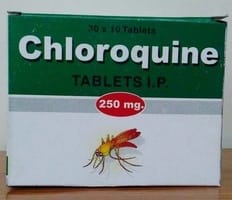
Chloroquine Phosphate 250mg Tablets
When looking for chloroquine phosphate 250mg tablets, it’s crucial to ensure you’re getting lab-tested, pharmaceutical-grade medication. PowderLap provides verified tablets with full ingredient transparency.
Chloroquine Phosphate Tablets 250mg
Chloroquine phosphate tablets 250mg are a standard formulation used to treat malaria. For consistent quality and dependable delivery, check out PowderLap’s online selection.
Chloroquine Phosphate Tablets BP 250mg
The “BP” label on chloroquine phosphate tablets BP 250mg indicates British Pharmacopoeia standards — a mark of quality. You can purchase these compliant tablets easily from PowderLap.
AstraZeneca Avloclor 250mg Chloroquine
Branded as AstraZeneca Avloclor 250mg chloroquine, this version is widely recognized in clinical settings. PowderLap offers both branded and generic options for global customers.
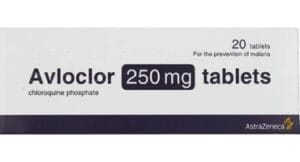
Avloclor 250mg Chloroquine Phosphate
Avloclor 250mg chloroquine phosphate is another way this formulation is referred to. For safety and authenticity, only buy from verified suppliers like PowderLap.
Chloroquine 250mg
Chloroquine 250mg is a common strength prescribed for treating and preventing malaria. If you’re looking to purchase, PowderLap offers safe and secure international shipping.
Chloroquine 250mg Tablets
Buying chloroquine 250mg tablets online requires caution. Avoid unreliable vendors and opt for trusted platforms like PowderLap, where quality is guaranteed.
Chloroquine Phosphate 250mg
When someone searches for chloroquine phosphate 250mg, they’re likely seeking high-quality medication or raw material. PowderLap specializes in pharmaceutical-grade products you can trust.

Chloroquine Phosphate Tablets IP 250mg
Chloroquine phosphate tablets IP 250mg conform to Indian Pharmacopoeia standards. If you’re looking for IP-certified products, PowderLap is a top-tier provider.
Thuốc Chloroquine Phosphate 250mg
In Vietnamese, thuốc chloroquine phosphate 250mg translates to chloroquine phosphate medicine. PowderLap supports international customers with multilingual support and quality products.
Why PowderLap?
Whether you’re sourcing for treatment, research, or bulk purchase, PowderLap offers:
Verified pharmaceutical-grade chloroquine
Worldwide delivery
Strict quality standards (BP, IP, USP)
Transparent lab reports
Excellent customer service

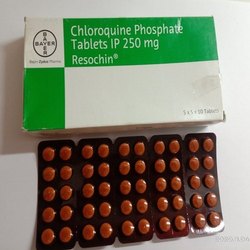
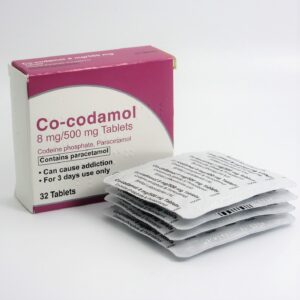
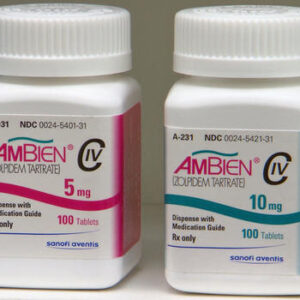
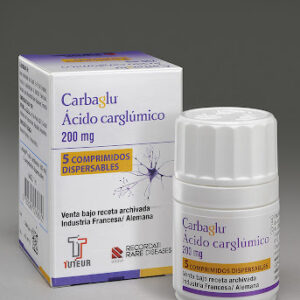
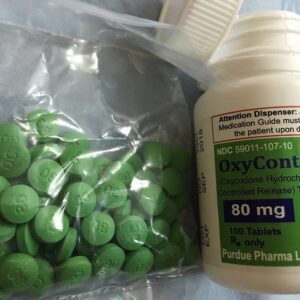
Reviews
There are no reviews yet.